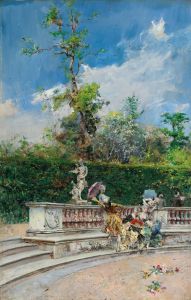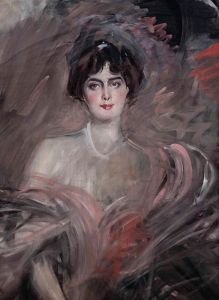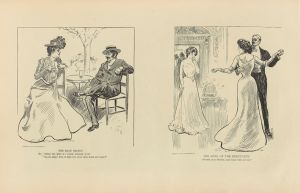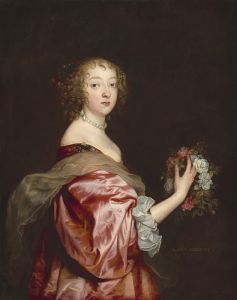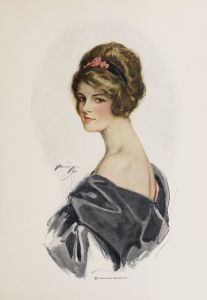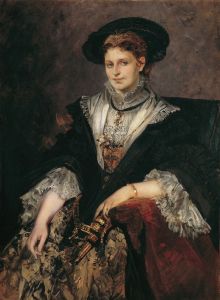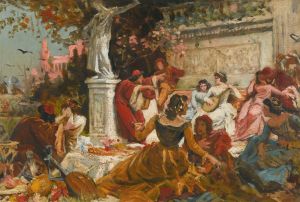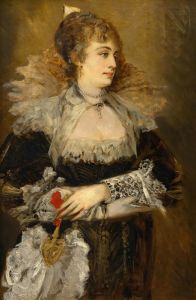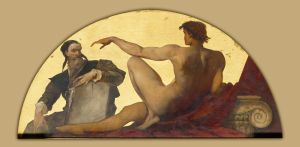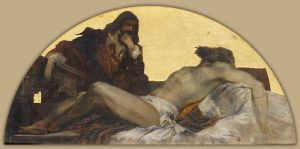
Portrait Of Maria, Countess Von Dönhoff
A hand-painted replica of Hans Makart’s masterpiece Portrait Of Maria, Countess Von Dönhoff, meticulously crafted by professional artists to capture the true essence of the original. Each piece is created with museum-quality canvas and rare mineral pigments, carefully painted by experienced artists with delicate brushstrokes and rich, layered colors to perfectly recreate the texture of the original artwork. Unlike machine-printed reproductions, this hand-painted version brings the painting to life, infused with the artist’s emotions and skill in every stroke. Whether for personal collection or home decoration, it instantly elevates the artistic atmosphere of any space.
Hans Makart was an Austrian painter known for his historical and allegorical paintings, as well as his influence on the culture of Vienna in the late 19th century. Among his works is the portrait titled "Portrait of Maria, Countess von Dönhoff." This painting exemplifies Makart's characteristic style, which often included rich colors, elaborate compositions, and a sense of theatricality.
Maria, Countess von Dönhoff, was a member of the Prussian nobility, and her portrait by Makart reflects the artist's ability to capture the elegance and status of his subjects. Makart was renowned for his ability to portray the aristocracy with a sense of grandeur and opulence, and this portrait is no exception. The countess is depicted with a poised demeanor, dressed in luxurious attire that highlights her social standing.
Makart's work was heavily influenced by the Baroque period, and this influence is evident in the dramatic use of color and light in the portrait. The painting likely features a rich palette, with deep reds, golds, and other vibrant hues that were typical of Makart's style. His technique often involved layering colors to create depth and texture, which added to the lifelike quality of his portraits.
The portrait of Maria, Countess von Dönhoff, would have been created during a time when Makart was at the height of his career. He was a celebrated figure in Vienna, known for his grandiose paintings and his role in shaping the aesthetic tastes of the time. His studio was a hub of artistic activity, and he was a mentor to many young artists who would go on to have successful careers of their own.
Makart's influence extended beyond the realm of painting; he was also involved in interior design and theatrical productions, often blurring the lines between different forms of art. His work was characterized by a sense of spectacle, and he was known for his ability to create immersive environments that captivated his audience.
The portrait of Maria, Countess von Dönhoff, would have been a commission, as was common for portraits of nobility during this period. Such works were often intended to convey the power and prestige of the subject, serving as a testament to their place in society. Makart's ability to capture these qualities made him a sought-after portraitist among the European elite.
While specific details about the portrait of Maria, Countess von Dönhoff, such as its current location or the exact year it was painted, are not readily available, it remains an example of Hans Makart's skill in portraiture and his contribution to the art of his time. His work continues to be studied and appreciated for its artistic merit and its reflection of the cultural and social dynamics of 19th-century Europe.





